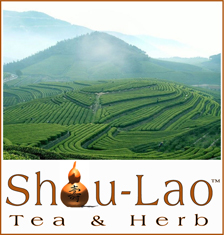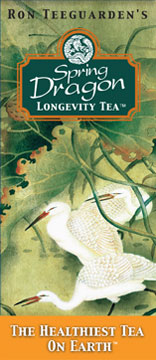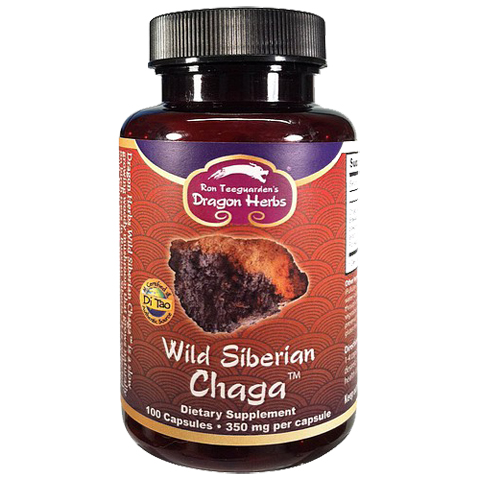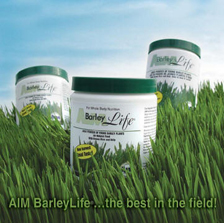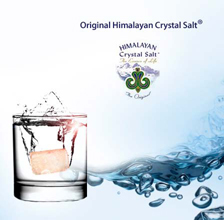Wild Siberian Chaga
Chaga is comprised of two visually distinguishable parts: a black part (outside) and an orange part (inside). These are generally classified as the fruiting body and sclerotium, respectively. Chaga does not produce an extended "fruiting body" ("mushroom") like that of Reishi mushroom. Typically Chaga is a blackish irregular shape, or "sclerotial conk." The "black" (very dark brown) skin (or "fruiting body") is rich in melanin. It takes about 10—15 years of parasitism to become large enough to be called "Chaga." From this age on, the fungus can be used for tonic and medicinal preparations. Some commercial growers of Chaga in Myanmar can "grow" Chaga to a pretty large size in just a few years, but it has weak biological activity. Chaga is a "slow growth fungus" and requires the years of growth to attain a certain maturity and biological complexity. Recently, many reports have been published concerning the health promoting functions of Chaga, including protection of DNA damage from oxidative stress, and anti-inflammatory activity throughout the body.
Dragon Herbs Chaga is collected wild, from remote, pristine black birch forests in the Kama River Basin of arctic Siberia, considered the premier source in the world for Chaga (Di Tao), and all Chaga mushrooms used to produce Dragon Herbs Wild Siberian Chaga are at least 20 years old at the time of collection. It has been well established that Chaga older than 20 years has both superior chemistry and superior benefit to human consumers. Siberian Chaga has been used for at least six hundred years in Russia, according to records, and probably much longer. It is considered to be a virtually miraculous herb by indigenous Siberians. There have been attempts at cultivating Chaga, but the results have so far been disappointing to pharmaceutical companies. Attempts for culturing this fungus axenically (under sterile conditions) have all resulted in a reduced production of bioactive metabolites. Wild Chaga is the way to go at this time.
There's Plenty Of Chaga Science
You don't have to understand (or even read) all of the following science to appreciate the fact that there is currently a lot of research being conducted on Chaga.
Chaga mushroom (Inonotus obliquus) has long been used as a folk medicine due to its numerous biological functions such as antibacterial, anti-allergic, anti-inflammatory and antioxidative activities. Recently, a large amount of research has been, and continues to be done, on Inonotus obliquus (Chaga).
Russian and Scandinavian scientists had conducted most of the scientific research on this powerful herb in the last century. More recently however, Japanese, Korean and Chinese researchers are doing much of the scientific heavy lifting. Traditionally, Asian herbalists believed that Chaga "preserves youthfulness, promotes health, and promotes longevity." Because of its potent protective qualities and high degree of safety, it is designated as a “superior herb.” It is categorized as a Qi tonic, like Reishi mushroom. It is also considered to be a superb Kidney tonic and cleanser. It is also used as a remedial herb every place that it is collected.
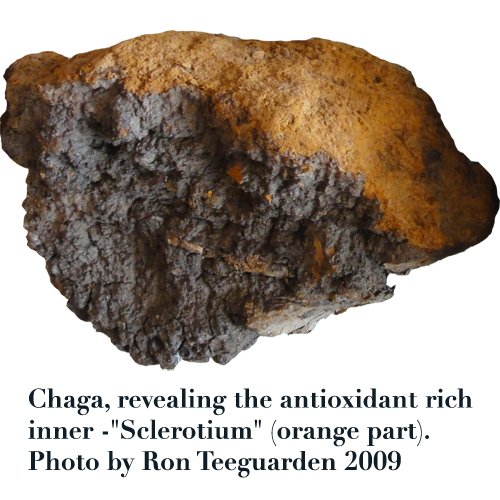
Research has supported the folk evidence that Chaga possesses potent immune supporting actions. Chaga is a rich source of β-glucans, especially 1-3-β-glucans, polysaccharides that are quintessential nutrients for the immune system. These polysaccharides have strong anti-inflammatory and immune balancing properties, enhancing the body’s ability to produce natural killer (NK) cells to battle infections. These polysaccharides are considered to be the primary active constituents of Chaga, at least from an immunological perspective. And upon ingestion, a range of secondary metabolites are produced, many of which are highly active as potent immune modulators. Chaga Polysaccharides effectively promote macrophage (white blood cell) activation through the MAPK and NF-κB signaling pathways, suggesting that Chaga Polysaccharides help regulate the immune response. The effectiveness of Chaga as an antiviral agent (as tested on West Nile virus and Herpes Simplex type 2 virus) has been shown to be dose dependent on the quantity of Chaga Polysaccharides present or their concentration. The antiviral results proved Chaga to be a very potent antiviral agent (rendering the viruses "completely inhibited." This is why Chaga Polysaccharides content is set at such a high level in Dragon Herbs Wild Siberian Chaga -- not less than 30%.
Chaga is a VERY powerful antioxidant. Two natural antioxidants, named inonotusin A and B have been isolated from the methanolic (alcohol) extract of the outer layer of Chaga, together with a molecule named DBL (3,4-dihydroxybenzaldehyde). More about DBL in a moment. Studies indicate that Chaga is a potent free radical scavenger, far stronger than any other popular dietary antioxidant, including blueberries, goji, resveratrol and acai. Chaga contains a range of important active constituents including the polysaccharides described above (at least 30% Chaga Polysaccharides by analysis in this product - these polysaccharides have powerful immunological and antioxidant activity), phenolic compounds (powerful antioxidant and antiviral compounds), and many lanostane triterpenoids (an important constituent of Chaga is inotodial).
Chaga produces massive amounts of high molecular weight phenolic pigments that have been categorized as melanins. This melanin "complex" is released to the surface of Chaga. Melanin is a potent antioxidant pigment that is present and needed throughout the human body, and has a wide range of health benefits. It has been demonstrated that this Chaga Melanin has strong genoprotective (DNA/gene protective) effects.
The antioxidant activity of the hot water extract (decoction) of Chaga has been precisely compared with those of other medicinal fungi (Agaricus blazei Mycelia, Ganoderma lucidum and Phellinus linteus) by Japanese researchers, showing that Chaga has the strongest antioxidant activity among the fungi examined in terms of both superoxide and hydroxyl radicals scavenging activities.
Recently, many research groups have begun identification of active small (low-molecular weight) compounds in medicinal mushrooms, with a focus on the yellow polyphenol pigments, which are composed of a styrylpyrone class of compounds. Chaga has been shown to produce a large amount of these styrylpyrone-type polyphenol pigments that exhibit various biological activities, including anti-oxidative, anti-inflammatory, cytotoxic, anti-platelet aggregation, anti-diabetic, anti-dementia and anti-viral effects. Styrylpyrone pigments in mushrooms are thought to have a role similar to that of flavonoids in plants. The inner part of the Chaga mushroom is orange due to the large quantity of these styrylpyrone-type polyphenol pigments. These styrylpyrone-type polyphenols contribute very significantly to Chaga's extremely potent antioxidant activity.
The compounds with the most potent antiviral activities in Chaga have been determined to be the phenolic compounds. The phenolic compounds are among the most potent antioxidants in Chaga as well.
Many of you already know about the transcription factor known as nuclear factor-kappaB (NF-kB), a molecule in all human cells that mediates virtually ALL disease, inflammation and death in humans. The suppression of this chemical is generally regarded as a means of reducing chronic and acute inflammation, degenerative and other kinds of disease, and to prolonging life. A Chaga-component known as DBL (3,4-dihydroxybenzalacetone) is a polyphenol derived Chaga. Chaga is used in Russian folk medicine to treat tumors, so investigators are exploring its mechanism of action. Because most genes involved in inflammation, anti-apoptosis (the blocking of natural cell death), and in cell proliferation -- all of which are hallmarks cancer -- are regulated by NF-kB, researchers postulated that DBL activity is mediated via modulation of the NF-kappaB activation pathway. They investigated the effects of DBL on NF-kB activation. They found that DBL suppressed NF-kB activation by a wide variety of inflammatory agents, including tumor necrosis factor (TNF), interleukin-1beta, epidermal growth factor, lipopolysaccharide and others. The suppression was cell type independent and inhibited both inducible and constitutive NF-kappaB activation. DBL inhibits I-kappa-B-alpha-kinase activity, I-kappa-B-alpha phosphorylation and degradation, p65 phosphorylation, and translocation, all of which are involved in NF-kB activation. DBL also suppressed the expression of TNF-induced and NF-kappaB-regulated proliferative, antiapoptotic, and metastatic gene products. These effects correlated with suppression of TNF-induced invasion.
Researchers have recently reported in an international research journal (2011) at least one mechanism by which Chaga modulates immune responses is through secretion of Th1/Th2 cytokines (bioactive chemicals) in immune cells, and that Chaga regulates antigen-specific antibody production. This modulatory effect is responsible for Chaga's "double-direction" adaptogenic effect on the immune response. This activity is very similar to the same activities long noted in Reishi mushroom (Ganoderma).
The Chinese variety of Chaga has been studied for its impact on influenza, and though it is not the same species as Siberian Chaga, it is VERY similar compositionally and is considered interchangeable (though perhaps slightly less potent than the Siberian variety). It has been shown that this herb has a potent impact on how the body reacts to the influenza virus. In China, it is listed as one of the five primary "anti-influenza virus mushrooms." The influenza virus infection is recognized by the human innate immune system through the two genetic pathways (toll-like receptor & and retinoic acid inducible gene I).These two recognition pathways both lead to the activation of type I interferons and resistance to infection. Chaga (and Reishi mushroom) contain selenium, iron and zinc in large concentrations while chromium, manganese, copper and magnesium were found in lower concentrations. Analysis of serum trace element composition in lab animals showed that these anti-influenza virus mushrooms increase serum trace mineral content significantly -- but only when consuming the whole mushroom extract (obtaining all active constituents simultaneously as opposed to consuming the trace elements as independent nutrients). The trace elements, and in particular selenium (which is greatly increased in the serum of the test animals - more than doubling that of control levels), present in these mushrooms play a direct or indirect role in their influenza fighting nature. They appear to provide prophylactic protection against influenza infection via stimulation of host innate immune response.
Chaga, like several other important tonic herbs, is a rich source of the trace element zinc. Zinc is an essential nutrient required for cell growth, differentiation and survival. Its deficiency causes immunodeficiency and many other health problems. Zinc is a critically important constituent of SOD, our most important innate antioxidant. Chaga has apparent antimutagenic actions.
Safety
Chaga’s safety has been well established. It is non-toxic. It may be used as a daily tonic in moderate amounts. Chaga has been widely used in Japan, and the Japanese government carefully monitors adverse reaction reports. As of May 2011, in spite of the widespread popular use of this herb, there have been no adverse reaction reports in Japan.
Chaga has traditionally been consumed as a hot tea, and the benefits associated with Chaga are based primarily (almost exclusively) on the cooked decoction or extract of Chaga. So mild cooking is considered appropriate for Chaga. Cooking produces metabolites that are believed to provide biological activity. Dragon Herbs Wild Siberian Chaga is a concentrated extract, produced by a state-of-the-art moderate-temperature full-spectrum extraction technology. Special highly sensitive technologies were used during the extraction process to assure full extraction of bioactive components. Both water and ethanol (alcohol) were used in the extraction, and as a result, all bioactive components are present, including polysaccharides, polyphenols, melanin, styrylpyrone compounds, etc.
Ethanol and water extraction has been determined to extract virtually all of the major active constituents of Chaga. The ethanol (alcohol) extract is characterized by the predominant presence of lanostane-type triterpenoids and hispidin analogues. The water extract is characterized by polysaccharides and phenolic compounds. The ethyl ethanol and water extracts, both independently and together, revealed "remarkable potential for scavenging" the tested radicals (antioxidant activities here are indicated as capacities for scavenging superoxide anion, DPPH and hydroxyl radicals), while extracts made with synthetic solvents did not show this activity. Polyphenols are the major contributors for quenching the tested free radicals. Of the lanostane-type triterpenoids three compounds (16, 17 and 22) participated in scavenging hydroxyl radicals. Thus the polyphenols in Chaga are the principle constituents for quenching free radicals while polysaccharides and a few lanostane-type triterpenoids compounds contribute in scavenging free radicals.
Product Name: Siberian Chaga
Ingredient Name: Chaga Mushroom (Wild Russian Siberian Inonotus obliquus) powdered extract (water and alcohol extraction), (32% Chaga Polysaccharides by analysis).
Directions: Based on a history of safety and efficacy as a tonic, and upon epidemiological evidence that Chaga is very safe and free from side effects, Chaga may be consumed as a tonic herb over a long period of time (indefinitely) in moderate amounts. Chaga has Ron Teeguarden's Five Star rating (top).
Consume 1-4 capsules, 1 to 3 times per day as desired, or as directed by a qualified health care practitioner. In general, as a tonic herb for health promotion and health maintenance, a low-moderate dose of just 3 capsules per day is quite sufficient. Some animal studies support the notion that low doses and high doses of this herb have similar effects, so the low-moderate dose is recommended as a general protocol. Nevertheless, higher doses (equating to about 12 capsules a day) have not been found to cause side effects in the short or long term, so higher doses are safe for certain periods of time to enhance human functioning. Larger doses are possibly indicated for immunological balancing.
Capsules: Vegetarian fast-dissolving NP Capsules
Source: Kama River Basin of pre-arctic Siberia, Russia (Di Tao)
Traditiona Ron Teeguarden's Personal Usage: I will be taking 3 to 6 capsules of Dragon Herbs Wild Siberian Chaga per day, every day.
